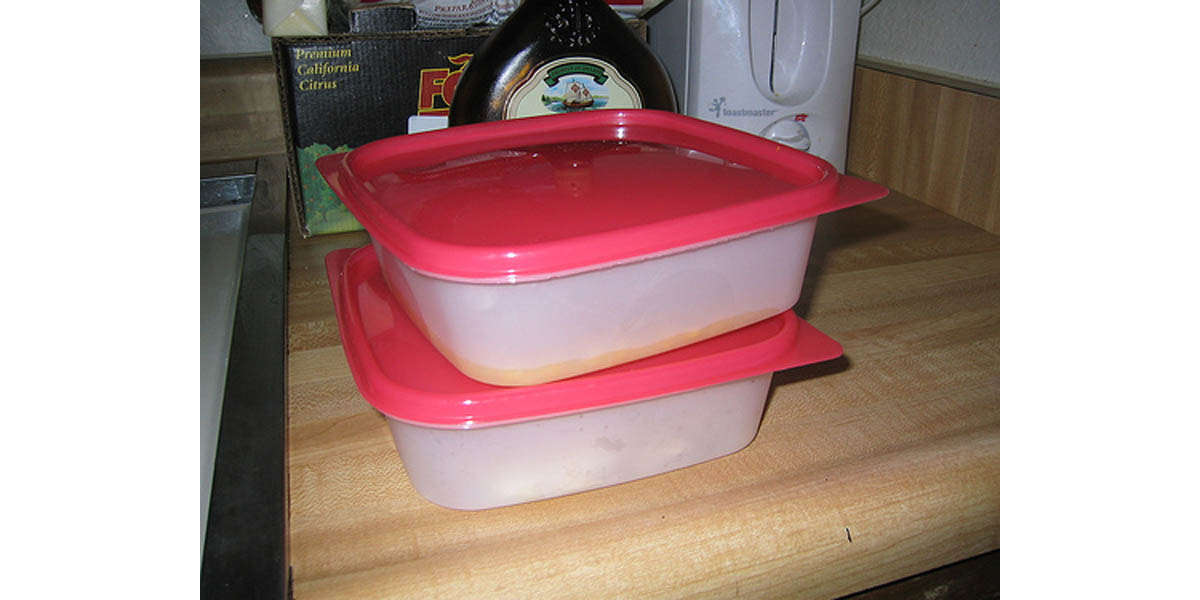Table of Contents
With food prices going nowhere but up, more and more people are buying in bulk and cooking in bulk. Actually saving money by buying groceries in bulk and on sale, however, requires eating leftovers.
Here is a quick guide to storing, reheating, and eating leftovers safely and with maximum flavor.
 Cooking kills most of the bacteria in food, but it almost never kills all of them. Cooked food is safe for 2 hours after cooking (1 hour if put on a serving table outdoors in hot weather), but at that point it must be refrigerated so that it does not go bad. The time starts just as soon as the food is taken off the stove or out of the oven, and continues while it is on the counter or on the table until it is put into the refrigerator. If you don't get your food back in refrigeration quickly, throw it out. Don't risk food poisoning to save on your food budget.
Cooking kills most of the bacteria in food, but it almost never kills all of them. Cooked food is safe for 2 hours after cooking (1 hour if put on a serving table outdoors in hot weather), but at that point it must be refrigerated so that it does not go bad. The time starts just as soon as the food is taken off the stove or out of the oven, and continues while it is on the counter or on the table until it is put into the refrigerator. If you don't get your food back in refrigeration quickly, throw it out. Don't risk food poisoning to save on your food budget.
Food becomes leftovers 2 hours after you cook it

Wash your hands with soap and warm water before handling food you want to store for later
Bacteria transferred from dirty hands can incubate slowly and unnoticed on leftovers you store in the cooler, or even in the freezer. It is also essential to handle leftovers with clean utensils and to store them in clean containers. Don't put cooked food in the same containers or on cutting boards used when for preparing raw food.Store food in shallow containers, no more than 3 inches (75 mm) tall
Mounds of food in a bowl provide a warm, cozy shelter for bacteria. Spreading food out in a shallow, closed container ensures that it chills evenly and quickly, stopping bacterial growth. It is also important not to stack food containers on top of each other. This also traps heat that can nurture microorganisms.Salads with creamy dressings keep longer than chopped salads without dressings
Deli salads in general tend to be safe for leftovers if you don't leave them out too long. E. coli does not multiply in mayonnaise (although it's possible to buy a salad that has enough E. coli when you buy it to make you sick).Adding vinegar to salads stops bacterial growth
Lowering the pH of a deli salad from 4.5 to 4.3 (roughly equivalent to adding a teaspoon of vinegar to half a pound/200 grams of salad) slows the growth of E. coli by 99%. Vinegar will not stop the growth of Listeria bacteria, but these bacteria do not grow to numbers that can cause food poisoning unless the salad is allowed to warm up to about 75° F/24° C.Don't keep leftovers more than a week
Acidic foods may keep as long as a week in tightly closed containers. Most of the time, however, leftovers should be eaten in three days or less. Dating the container gives you a way to make sure you are not keeping a leftover too long and risking stomach upset or worse. If you are pickling a food, for instance, making sauerkraut or kimchi at home, room temperature storage while it is fermenting is OK.If it smells bad, throw it out
No matter when you put leftover food into the refrigerator, don't eat it if it smells bad. Your nose knows when food is not fit to eat.
Continue reading after recommendations
- Hwang CA, Sheen S. Growth characteristics of Listeria monocytogenes as affected by a native microflora in cooked ham under refrigerated and temperature abuse conditions. Food Microbiol. 2011 May, 28(3):350-5. Epub 2010 Mar 17.
- Photo courtesy of arthaey on Flickr: www.flickr.com/photos/arthaey/381480441/
- Photo courtesy of fuschia_foot on Flickr: www.flickr.com/photos/fuschia_foot/2149921821/

